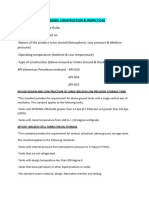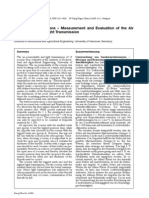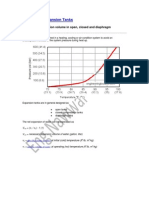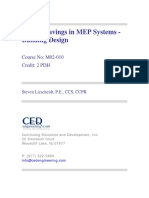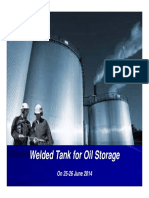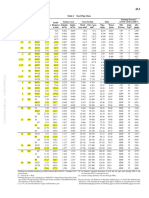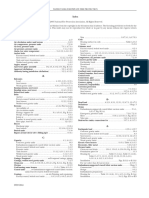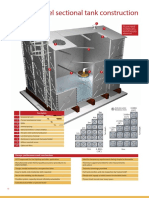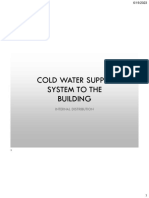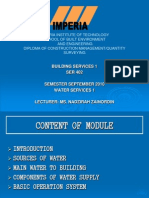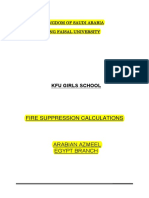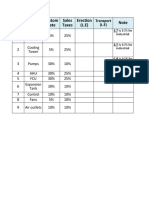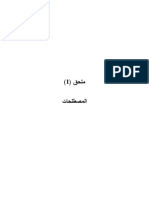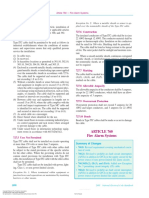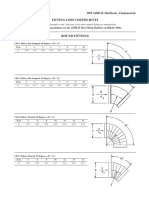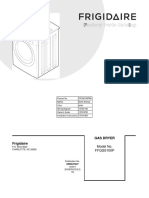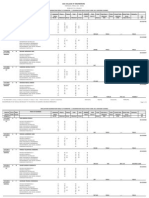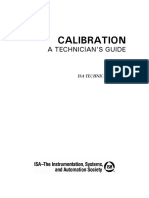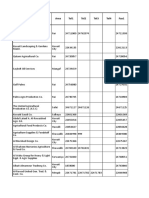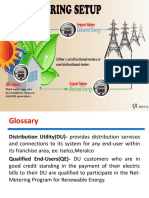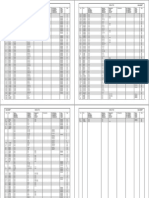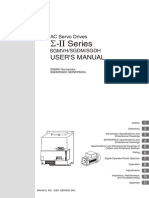PLUMBING DESIGN COURSE
AYMAN HASSAN
MECHANICAL ENGINEER
aymmhas@yahoo.com
01004334635
� PURPOSE OF PLUMBING DESIGN SYSTEM
THE PURPOSE OF PLUMBING DESIGN SYSTEM,
IS TO PROVIDE CLEAN WATER SUPPLY
WITH A SUITABLE CAPACITY &PRESSURE
TO WATER FIXTURES
&
, TO DRAIN THE RESULT OUTSIDE THE BUILDING
SAFELY WITHOUT AFFECTING HEALTH.
4/12/2014 2
� FIRST LECTURE CONTENTS
1. Codes & Standards for Plumbing System.
2. Brief for Plumbing Systems.
3. Water Supply Network, Pipe Types and connections.
4/12/2014 3
� 1. CODES AND STANDARDS FOR
PLUMBING SYSTEM
UNIFORM PLUMBING CODE (UPC).
NATIONAL PLUMBING CODE ( NPC).
INTERNATIONAL PLUMBING CODE ( IPC).
AMERICAN SOCIET Y OF PLUMBING ENGINEERS ( ASPE).
الكود المصري لتصميم وتنفيذ خطوط المواسير لشبكات مياه الشرب والصرف
الصحي .
الكود المصري ألسس تصميم وشروط التنفيذ لهندسة التركيبات الصحية للمباني .
الكود المصري ألعمال التغذية بالمياه الساخنة وحمامات السباحة .
الكود المصري لمحطات الرفع .
4/12/2014 4
� 2. BRIEF FOR PLUMBING SYSTEMS
I. Water Supply System.
II. Sewer Drainage System.
III. Grey Water System.
IV. Chemical Waste Drainage System.
V. Storm (Rain) Water Drainage System.
VI. Air Conditioning Condensate System.
VII. Car Repair Service Centers \Basement Floor Drainage.
VIII. Irrigation System.
4/12/2014 5
� 3. WATER SUPPLY NET WORK
A. Estimation of Water Demand for a certain project.
B. Sources of Water.
C. Components of Water Supply Network.
4/12/2014 6
� A. ESTIMATION OF WATER DEMAND
FOR A CERTAIN PROJECT
Water demand(Capacity and storage duration ) for a project
should be well estimated to ensure a continuous supply of
water whenever needed by project occupants or equipments.
The water demands varies from one project to another, also
storage duration varies according to project location and
municipal water supply conditions:(1day storage for a
residential building – 2 days for hospitals, ….)
Amount of stored water should be well estimated to avoid:
1. (Huge capacity & high cost) if overestimation of stored
water occurred, OR
2. Shortage of water if underestimation had occurred.
4/12/2014 7
� ESTIMATION OF WATER DEMAND
FOR A CERTAIN PROJECT
To estimate the required water capacity the following factors
should be known:
1. Number of project occupants& equipments.
2. Required water demand for occupants according to the
application.
3. Water storage Duration.
4/12/2014 8
� 1. NUMBER OF PROJETC
OCCUPANTS& EQUIPMENTS
The water demand depends basically on the number of project
occupants and equipments need to be supplied with water(if
required) such data should be known from one of the
following sources:
1. Data from project Architect.
2. Furniture of drawing plans(number of rooms for hotels
/hospitals – number of of fices for of fice buildings, …… etc).
3. By estimating occupants number according to the total
gross area of the project.( 1 person occupies about 100ft 2 at
of fice building).
4/12/2014 9
� ESTIMATION OF NUMBER OF
PERSON FOR A PROJECT
4/12/2014 10
� ESTIMATION OF NUMBER OF
PERSON FOR A PROJECT
4/12/2014 11
� ESTIMATION OF NUMBER OF
PERSON FOR A PROJECT
4/12/2014 12
� ESTIMATION OF NUMBER OF
PROJECT OCCUPANTS
4/12/2014 13
� 2. REQUIRED WATER DEMAND
ACCORDING TO APPLICATION
4/12/2014 14
� WATER REQUIREMENTS
(NETWORKS)
4/12/2014 15
� WATER REQUIREMENTS
(NETWORKS)
4/12/2014 16
� ESTIMATION OF WATER
TANK SIZE “EXAMPLE”
Estimation of water supply requirements for a hotel building
(5 Stars) consists of 150 room:
1. Number of Guests(2 persons per room)=150*2=300.
2. Required water capacity per guest=1500 lpd (liter per day
including all services and staf f ).
3. Total water demand per day=300*1500=450 m 3 .
4. Water demand for (2) days=450*2=900 m 3 .
For MAKKAH projects assume 5 persons per room.
4/12/2014 17
� TANKS ARRANGEMENT
OPTION(1):
Install an underground tank of 2 compartments each of
450 m 3 .
OPTION(2):
Install an underground tank of 2 compartments each of
400m 3 and a roof top tanks of the remaining 100m 3 .
4/12/2014 18
� B. SOURCES OF WATER
The water network of a building/project is being supplied by
using one or more of the following sources:
1. Municipal (City -Potable) Water Network.
2. Underground Water Tank.
3. Above Ground water Tank.
4/12/2014 19
� 1. MUNICIPAL WATER SUPPLY NET WORK
Water is supplied from water station to fill an Elevated Water
Tank, the water then supply buildings by the action of gravity.
Elevated Water Tank is re -filled by using water pumps located
near to the elevated tank.
Elevated Tanks helps to avoid the intermittent operation of
pumps and thus decrease operating duration of pump and
increase its life time.
4/12/2014 20
� ELEVATED WATER TANK
(WATER TOWER)
An elevated water tower will create pressure at the ground -
level outlet of 1 psi per 2.31 feet of elevation.
Thus a tank elevated to 70 feet creates about 30 psi of
discharge pressure. 30 psi is suf ficient for most domestic and
industrial requirements.
Capacity of elevated tanks would reach more than 1 .5 million
gallons.
4/12/2014 21
� ELEVATED WATER TANK
(WATER TOWER)
4/12/2014 22
� ELEVATED WATER TANK
(WATER TOWER)
4/12/2014 23
� ELEVATED WATER TANK
(WATER TOWER)
4/12/2014 24
� ELEVATED WATER TANK
(WATER TOWER)
4/12/2014 25
� MUNICIPAL WATER SUPPLY NET WORK
4/12/2014 26
� MUNICIPAL WATER SUPPLY NET WORK
WATER METER
4/12/2014 27
� 2. UNDERGROUND\ABOVE GROUND
CONCRETE WATER TANK
Underground water tanks are used when a continuous supply
of water is needed(Office Buildings -Hospitals-Hotels,…).
Also water tanks is needed if the project has a high water
requirement and thus has a huge pumps which would
decrease network’s pressure.
The underground water tank is filled by municipal water
network, then a pumping station is used to elevate water to
the buildings fixtures with the minimum required operating
pressure.
4/12/2014 28
� UNDERGROUND\ABOVE GROUND
CONCRETE WATER TANK
Underground water tanks are being sized according to the
desired storage duration and project application.
Underground water tanks are commonly made of concrete.
Water filters maybe used before filling tanks, if the municipal
water network is contaminated.(or at Hospitals)
4/12/2014 29
� UNDERGROUND WATER TANK
4/12/2014 30
� UNDERGROUND WATER TANK
4/12/2014 31
� UNDERGROUND WATER TANK
4/12/2014 32
� UNDERGROUND WATER TANK
4/12/2014 33
� 3. ROOF WATER TANK
Roof water tanks are used to minimize the capacity of
underground water tank and also decreases the operating
time of ground water pumps(LIFTING PUMP).
Roof water tanks are used to supply the project by gravity so
it decreases and minimizes the load on the ground water
pump (regardless of the highest floors which need small
capacity pumps due to low static pressure of water due to low
water head).
Roof water tanks are made of (polyethylene -polypropylene-
stainless steel-GRP)
4/12/2014 34
� ROOF WATER TANK
Roof water tanks are placed at the highest point at roof floor
to increase the static head as much as possible, increasing
static pressure would avoid installing an additional roof water
network to supply last floors by additional pumps.
Civil engineer should be revised for roof tank location and
capacities(weight).
Underground tank supplies the roof tanks by using a lifting
pump, and then roof tanks supply the system directly by a
gravity roof water network and a Booster pump for highest
floors(if needed).
4/12/2014 35
� ROOF WATER TANK
4/12/2014 36
� ROOF WATER TANK
4/12/2014 37
� ROOF WATER TANK
4/12/2014 38
� PLASTIC TANKS
4/12/2014 39
� PLASTIC TANKS DATA
4/12/2014 40
� HORIZONTAL PLASTIC TANKS PRICES
4/12/2014 41
� VERTICAL PLASTIC TANKS PRICES
4/12/2014 42
� PLASTIC TANK ARRANGEMENT VIDEO
4/12/2014 43
� STAINLESS STEEL
ABOVE-GROUND TANKS
4/12/2014 44
� GRP TANK
Corrosion resistant tanks made of composite materials(Glass
Reinforced Plastic).
Used when a specific capacity of water storage tank is
needed(a capacity not found in plastic tanks).
Concrete Roof tanks also may be also used for very hot areas
to avoid excessive heating of water or tank damage.
If GRP tanks with large capacities will be installed at roof
floor, it should be installed on columns to avoid excessive
load on roof floor which would damage roof slab.
4/12/2014 45
� GRP ABOVE-GROUND TANK
4/12/2014 46
� GRP ABOVE-GROUND TANK
4/12/2014 47
� GRP ABOVE-GROUND TANK
4/12/2014 48
� INTERMEDIATE TANK
For high rise buildings where the static head is very high, an
intermediate tank would be added at an intermediate floor of
the building to supply upper floors.
Two series connected pumps would be used instead of the
intermediate tank.
4/12/2014 49
� INTERMEDIATE TANK
4/12/2014 50
� C. WATER SUPPLY NETWORKS
1. Outer Water Supply Network.
2. Water Supply Pipes& Accessories.
3. Connection of Water Supply Pipes.
4. Valves Used for Water Supply Network .
4/12/2014 51
� 1. OUTER WATER SUPPLY NETWORKS
Main Network:
Water is being supplied to the project by a buried municipal
network which fills water tanks or supplies the project
directly.
Water meter and a stop valve
installed inside a valve pit or
another suitable location
should be provided.
4/12/2014 52
� MUNICIPAL WATER SUPPLY NET WORK
WATER METER
4/12/2014 53
� OUTER WATER SUPPLY NET WORKS
Water supply network is being buried at a safe underground
level surrounded by clean sand layers to avoid mechanical
loads.
A 15 cm clean sand bedding should be prepared below water
pipe, and a minimum of 30 cm bedding above water pipe
should also be prepared.
The water supply network should be routed around the outer
area of the project to supply each water branch line.
4/12/2014 54
� OUTER WATER SUPPLY NETWORKS
Water supply network should be routed away from any
electrical rooms or hazardous spaces.
If the water supply and drainage pipes are intersected , water
supply pipes should be 30 cm above drainage pipes.
Water supply pipes should be 2 meters away from drainage
pipes.
4/12/2014 55
�2. WATER SUPPLY PIPES & ACCESSORIES
Potable water supply lines are designed to serve 30 -50 years.
The allowed pipe materials for water supply pipes shall be as
follow:
1. Polypropylene.
2. UPVC - CPVC.
3. High Density Polyethylene.
4. Copper.
5. Galvanized steel.
6. Ductile Iron.
In general, the lead concentration for any pipes used for water
supply purposes shouldn’t exceed 0.8%.
4/12/2014 56
� WATER SUPPLY PIPES
Water supply pipe network inside the building is preferred to
be at the basement floor to provide isolating valves at the
riser bases(easy accessible).
If water supply network can’t be installed at basement floor,
water network is highly preferred to be installed at roof floor
for a better control of water supply risers.
Water supply riser is preferred to be routed inside a duct.
Water supply pipes inside toilets is preferred to be at the high
level of toilet(in case that false ceiling is used).
4/12/2014 57
� UNDERGROUND WATER PIPE
4/12/2014 58
� CLEAN SAND BEDDING
4/12/2014 59
� UNDERGROUND P.P WATER PIPE
4/12/2014 60
� UNDERGROUND P.P WATER PIPE
4/12/2014 61
� UNDERGROUND HD.PE WATER PIPE
4/12/2014 62
� UNDERGROUND HD.PE WATER PIPE
4/12/2014 63
� UNDERGROUND HD.PE WATER PIPE
4/12/2014 64
� BACKFILLING ABOVE WATER LINE
4/12/2014 65
� WATER SUPPLY& DRAINAGE PIPE
4/12/2014 66
� PIPE THRUST BLOCK
4/12/2014 67
� PIPE THRUST BLOCK
4/12/2014 68
� PIPE THRUST BLOCK
4/12/2014 69
� PIPE SLEEVE
4/12/2014 70
� PIPE SLEEVE
4/12/2014 71
� PIPE SLEEVE
4/12/2014 72
� PIPE CROSSING
Crossings are used to support the pipe if it’s crossing a river
or bridge.
4/12/2014 73
� PIPE CROSSING
4/12/2014 74
� 3. CONNECTION OF
POLYPROPYLENE& HD.PE PIPES
There are two ways for connecting polypropylene pipes:
1 . Welding:
I. Socket Welding.
II. Saddle Welding.
III. Butt Welding.
2. Threaded Connectors.
4/12/2014 75
� I. POLY PROPYLENE
SOCKET WELDING VIDEO
4/12/2014 76
� II. POLY PROPYLENE
SADDLE WELDING VIDEO
4/12/2014 77
� III. POLY PROPYLENE
BUTT WELDING VIDEO 1
4/12/2014 78
� POLY PROPYLENE
BUTT WELDING VIDEO 2
4/12/2014 79
� POLY PROPYLENE
BUTT WELDING
4/12/2014 80
� CONNECTION OF HD.PE PIPE VIDEO
4/12/2014 81
� POLYPROPYLENE PIPE DATA
4/12/2014 82
�4/12/2014 83
� SOCKET
4/12/2014 84
� REDUCING SOCKET
4/12/2014 85
� ELBOW 90 O
FEMALE-MALE
4/12/2014 86
� ELBOW 90 O
FEMALE-MALE
4/12/2014 87
� ELBOW 45 O
FEMALE-MALE
4/12/2014 88
� T PIECE
SOCKET WELDING
4/12/2014 89
� REDUCER T PIECE
SOCKET WELDING
4/12/2014 90
� CROSS CONNECTION
4/12/2014 91
� CROSS OVER FITTING
4/12/2014 92
� END CAP
4/12/2014 93
� WELD-IN SADDLE
4/12/2014 94
� WELDING SADDLE
4/12/2014 95
� PLUG FOR PRESSURE TESTS
4/12/2014 96
� PARAMETERS OF BUTT WELDING
4/12/2014 97
� PVC PIPES ADVANTAGES
4/12/2014 98
� CONNECTION OF
PVC PIPE
All pressurized pipes are preferred to be connected by the
adhesive tapes.
4/12/2014 99
� CONNECTION OF
PVC PIPE
4/12/2014 100
� CONNECTION OF
PVC PIPE
4/12/2014 101
� CONNECTION OF PVC PIPE VIDEO 1
4/12/2014 102
� CONNECTION OF PVC PIPE VIDEO 2
4/12/2014 103
� PVC PIPE FITTINGS
4/12/2014 104
� PVC PIPE FITTINGS
4/12/2014 105
� 4. VALVES USED FOR
WATER SUPPLY NETWORK
Valves are used for water supply network to separate it for ease of
maintenance.
Valves should be made of (copper - stainless steel - plastic – bronze)
and should be coated by nickel-chrome.
Valves should be installed at water network through a dismantling
joint(Erection Joint).
Types of used valves:
1. Sectional Valves& valve pit/ house connection.
2. Air valve.
3. Drain Valve.
4. Pressure reducing valve.
4/12/2014 106
� 1. SECTIONAL VALVES& VALVE PIT
Sectional valves/house connection should be installed at each
branch line of the water supply network to separate this branch
when needed for maintenance.
Valves should be installed inside an accessible valve pit.
Most common sectional valves are Gate Valves - Butterfly
Valves(light weight-less volume).
Sectional valves are installed for:
1. Each building.
2. Between water meter gauge.
3. Each home water inlet.
4. Each riser and branch.
4/12/2014 107
� ISOLATING VALVES
4/12/2014 108
� ISOLATING VALVES
4/12/2014 109
� HOUSE CONNECTION
4/12/2014 110
� VALVES INSIDE A VALVE PIT
4/12/2014 111
� HOUSE CONNECTION
4/12/2014 112
� 2. AIR VALVE
Used to release the air from water supply network during the
filling of network.
4/12/2014 113
� AIR VALVE
4/12/2014 114
� AIR VALVE
4/12/2014 115
� AIR VALVE
4/12/2014 116
� 3. DRAIN VALVE
Drain valves are installed to drain the network whenever
needed for maintenance or any other reason.
Drain valves should be installed inside a valve pit.
4/12/2014 117
� DRAIN VALVE
4/12/2014 118
� DRAIN VALVE
4/12/2014 119
� 4. PRESSURE REDUCING VALVE
Used to decrease the pressure to operate the lines and
fixtures below maximum pressure.
Should be installed inside a valve pit.
Maximum operating pressure for plumbing fixtures is 4 Bar.
4/12/2014 120
� TESTING OF WATER SUPPLY PIPES
4/12/2014 121
� TESTING OF WATER SUPPLY PIPES
4/12/2014 122
� TESTING OF WATER SUPPLY PIPES
4/12/2014 123
� TESTING OF WATER PIPE
4/12/2014 124
� TESTING OF WATER PIPE
4/12/2014 125
� TESTING OF WATER PIPE
4/12/2014 126
�4/12/2014 127
















